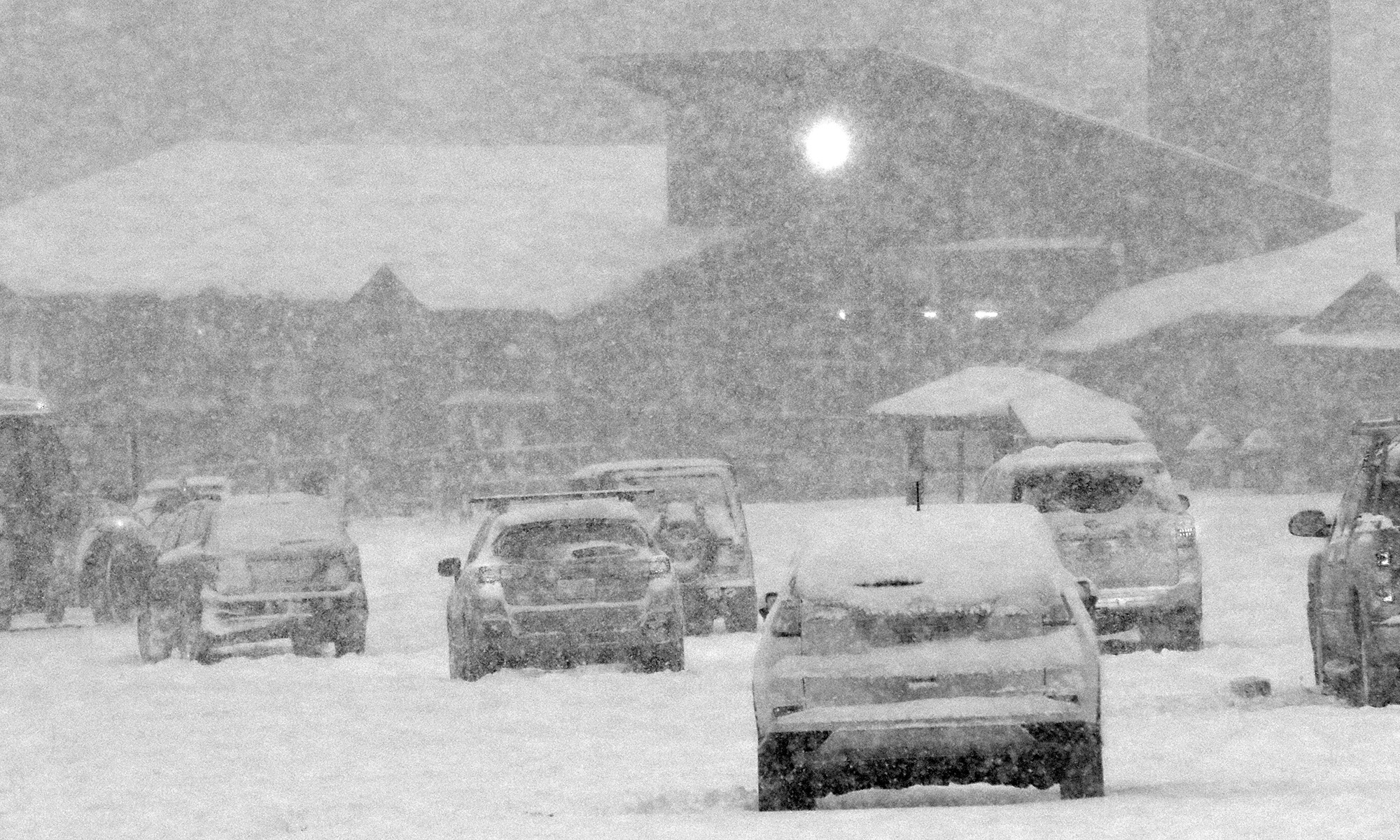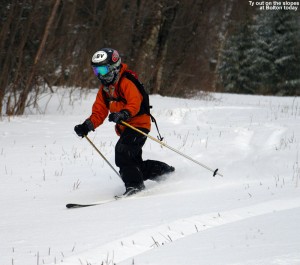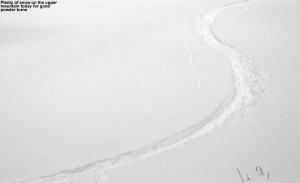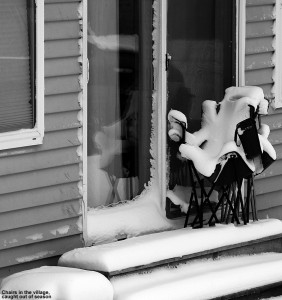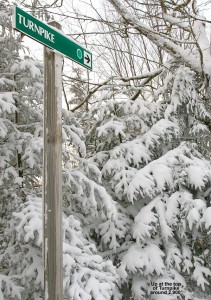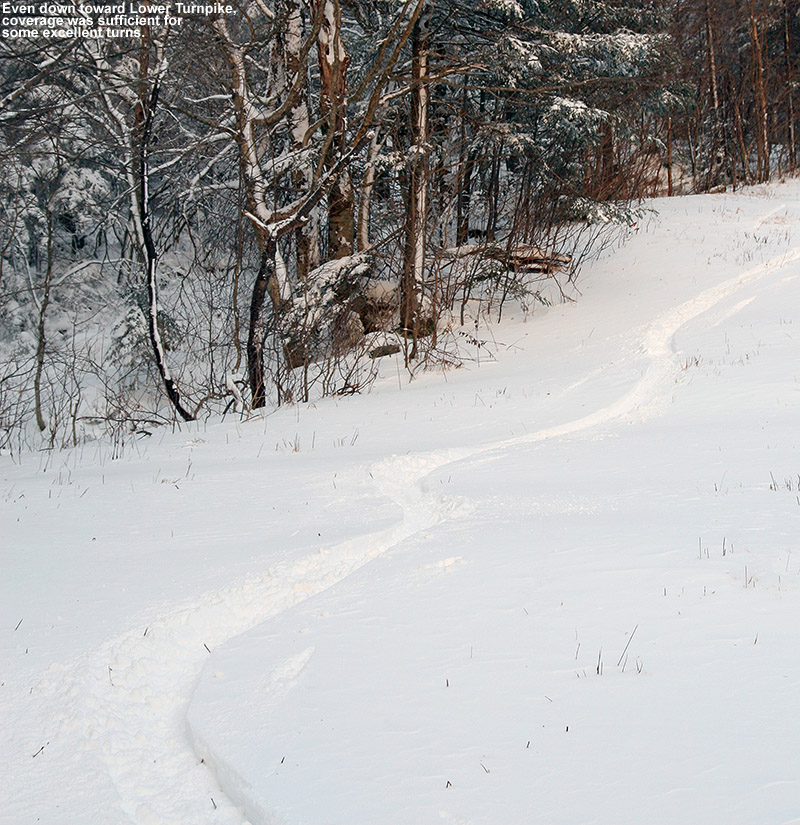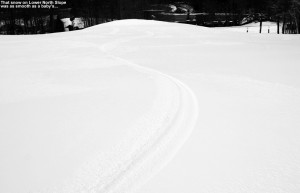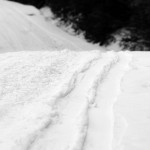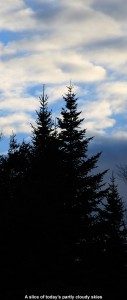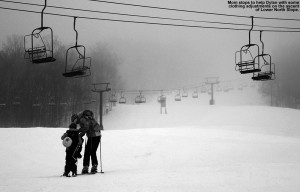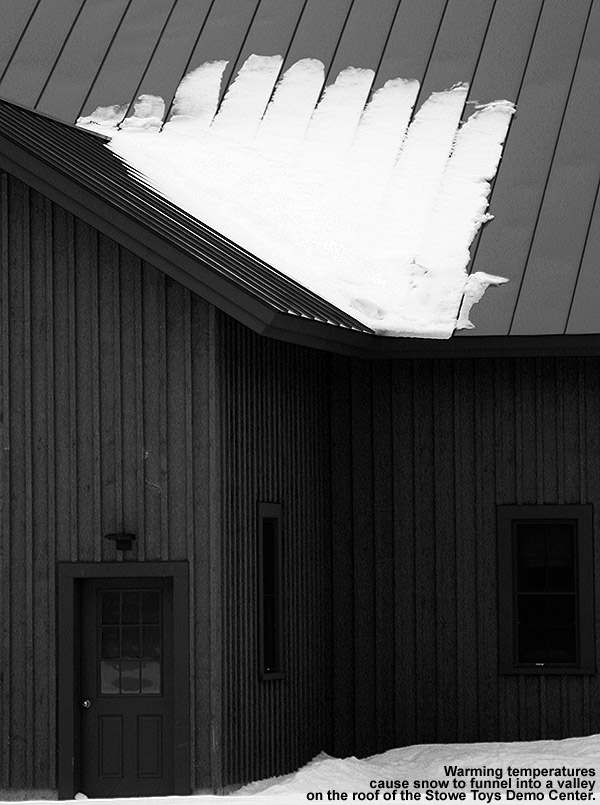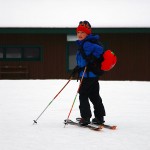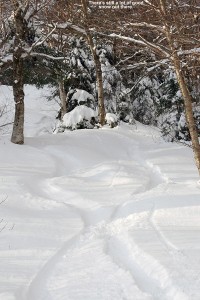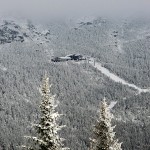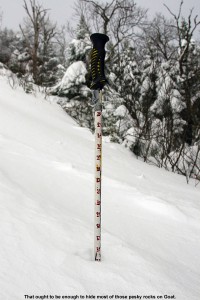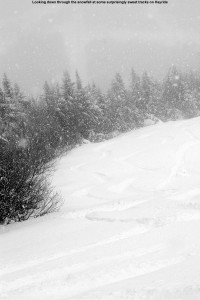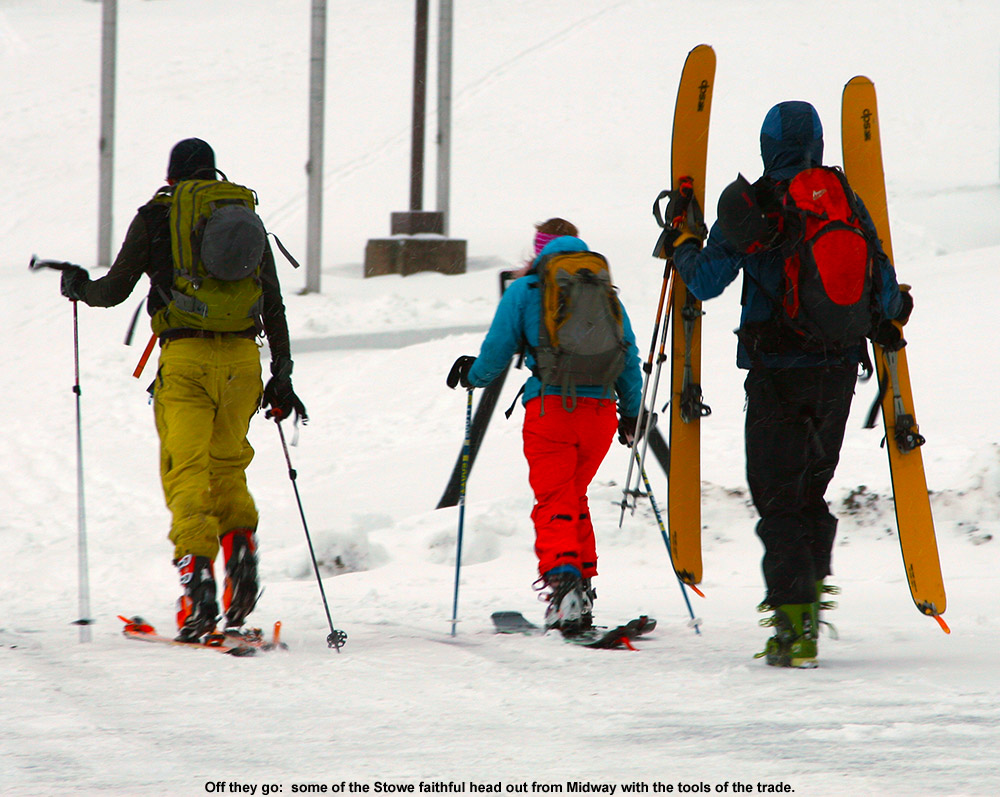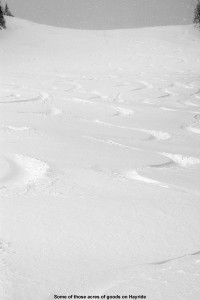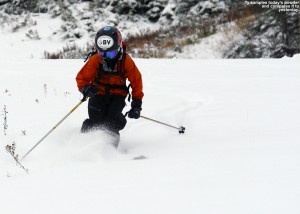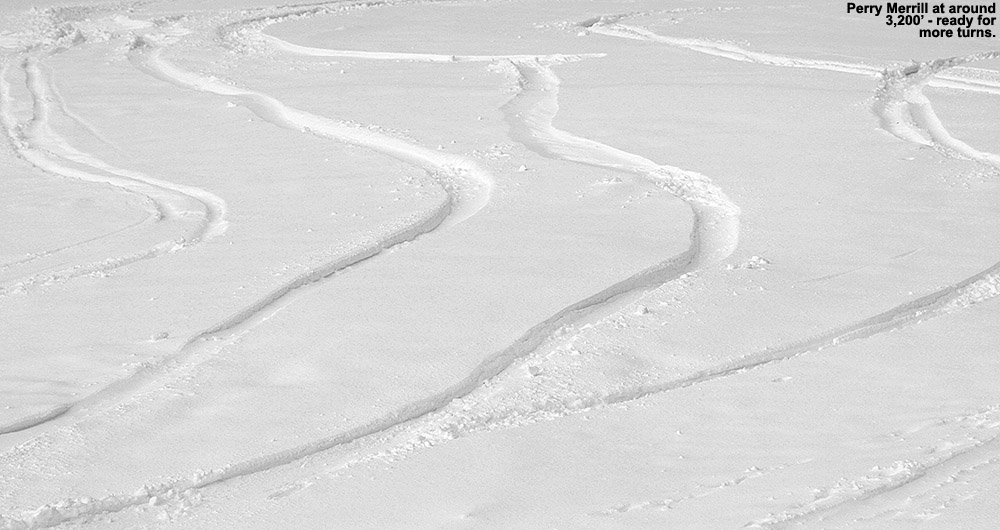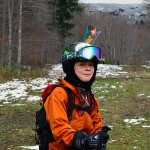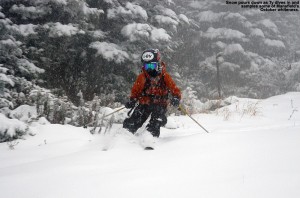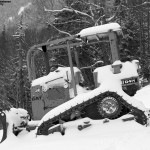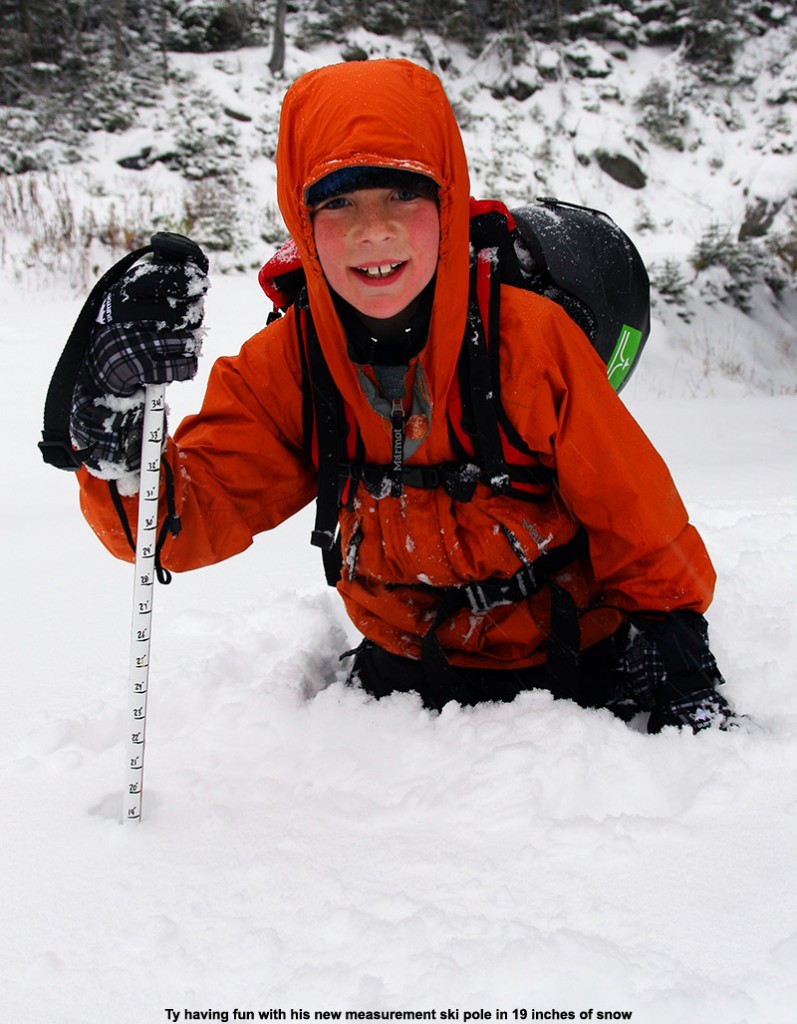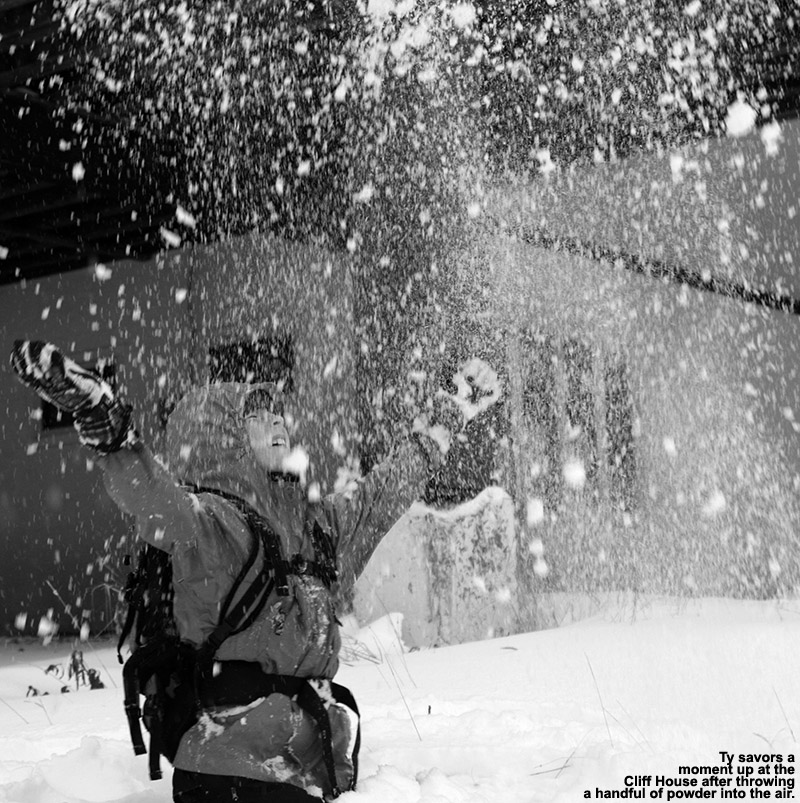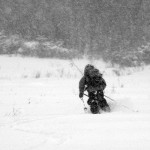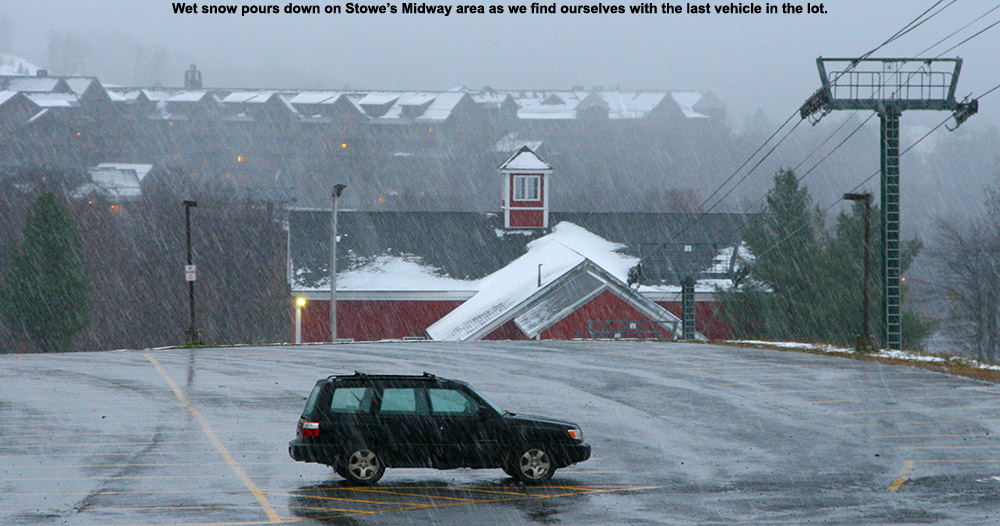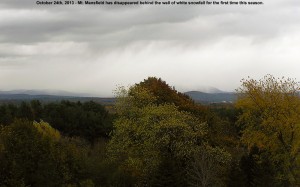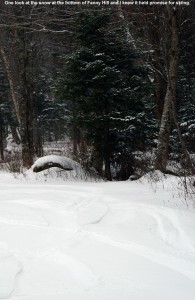
The ski tour we took yesterday was certainly considered a success, since both E and Ty were saying positive things today, and Ty was expressing to Dylan that he missed out on some fun. With the prospects for a little more snow today from a passing Alberta Clipper, I figured another visit to the mountain was in order, and I decided to make it at the end of the day once the new snow had started to accumulate and top off the powder. I couldn’t quite convince anyone else to come with me since they were having too much fun sledding or doing other stuff, so it was another solo outing.
I wasn’t exactly sure when the snow was supposed to start, but eventually it looked like I was going to run out of light, so around 3:00 P.M. I finally headed out. Fortunately, flakes had just started falling in the valley, so I knew the snow would already be well underway up on the hill. Up at Bolton Valley, the temperature in the Village at 2,100’ was 30 F and a steady light snow was coming down. The flakes weren’t huge, but it was accumulating on my equipment quickly enough that gear left out took on a coating within a minute or two.
“Fanny Hill ultimately lost
out to Work Road because
the snow was just too
good – 6 to 8 inches of
fluff and hardly a track.”
After using Turnpike for the past couple of ascents, and seeing that skier traffic there had been decent, I decided to go for an alternative ascent route up through the Fanny Hill area. It would give me a chance to check out the skiing in that area, and still head over toward the Wilderness Lift Line if I didn’t find anything that seemed to top what we skied yesterday. My first interesting sight was right as I was starting my ascent on Lower Fanny Hill – on one of the small cross trails there was a group of folks hanging out in a protected nook in the trees, just sitting in a circle of chairs and chatting. I suspect they were from the Liftline Condos that were just beyond. There was no wind, so with the light snow falling and temperatures around 30 F, it was indeed a fun time to be outside; it just seemed like a fitting thing to be doing on a dark Sunday afternoon in December.
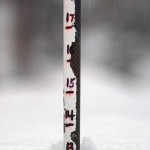 Upon reaching Fanny Hill, the snow looked good, so I decided to continue my ascent there and explore the surfaces further. In general there were the same several inches of powder above the base snow that we’d encountered on the Wilderness Lift Line yesterday, and only when I got into the steeper sections of terrain near the top did the pitch seem to be too much for the snowpack. In a nice undisturbed spot along the edge of the trail at 2,600’, I was able to check the full snowpack at that elevation, and that came in at 13”. I’d say that consisted of a 6” base, and the rest was powder on top
Upon reaching Fanny Hill, the snow looked good, so I decided to continue my ascent there and explore the surfaces further. In general there were the same several inches of powder above the base snow that we’d encountered on the Wilderness Lift Line yesterday, and only when I got into the steeper sections of terrain near the top did the pitch seem to be too much for the snowpack. In a nice undisturbed spot along the edge of the trail at 2,600’, I was able to check the full snowpack at that elevation, and that came in at 13”. I’d say that consisted of a 6” base, and the rest was powder on top
I continued up toward Upper Fanny Hill, generally staying away from the Sherman’s Pass area where I could hear the snow guns running. Those higher trails like Coyote, Work Road, Lower Crossover, and Swing, held deeper snow and had seen much less traffic. They were definitely going to be on my descent route. I stopped my ascent around 2,900’ on Upper Fanny Hill just before the steepest pitches, because I could see that they were somewhat windswept and just didn’t have the coverage they needed yet.
I played it by ear on the descent, just watching for those trails with deep snow that had seen minimal traffic. Fanny Hill ultimately lost out to Work Road because the snow was just too good – 6 to 8 inches of fluff and hardly a track. That brought me over to the Wilderness Lift Line, and since we’d skied the skier’s right yesterday, I took the skier’s left today and found the same type of good snow. I’m sure Fanny Hill would have been fine as well, but after committing to Work Road I went where gravity took me. The rest of the descent back to the Village was just like yesterday, good soft snow, so no complaints.
It was getting pretty dark when I was leaving, but the group of folks was still hanging out in their little alcove in the trees – it was a good spot. As I made my way along some of the Liftline Condos, I saw a woman pushing something along through the snow – she made her way through some of the deeper snow around the back of the condos, and then was out of view for a bit before she got onto the street and I could get a picture I didn’t know if it was a stroller, or just some other sort of vehicle for moving things, but whatever the case, the fact that it was on skis was intriguing. Clearly it seemed to be somebody who knows the Bolton Valley environment.
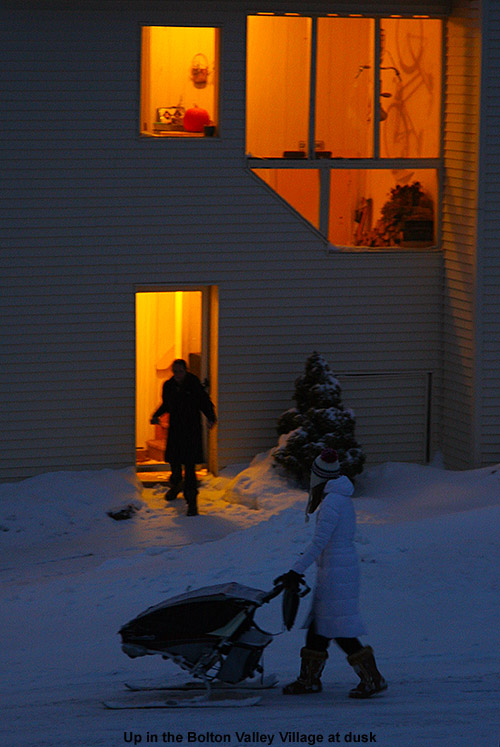
It snowed all the way down to the valley when I was heading back to the house around 5:00 P.M., and the temperatures had fallen below the freezing mark even at the bottom of the access road down at 340’. It looks like the next opportunities for snow are some light stuff in the early week, and then a frontal system later in the week.
